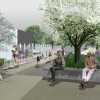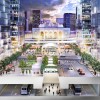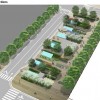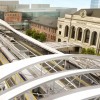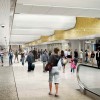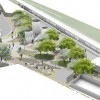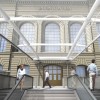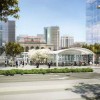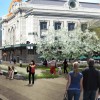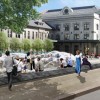Denver’s Union Station is a regional multi-modal hub that embodies everything about Denver’s upbeat future. The Union Depot & Railroad Company built Denver's first Union Station at the city's northwest edge. It cost $525,000 to build and opened on June 1, 1881. Union Station houses the Amtrak service and, more uniquely, the Ski Train, a local favorite that takes skiers on an entertaining ride through the Rockies to the Winter Park Ski Resort.
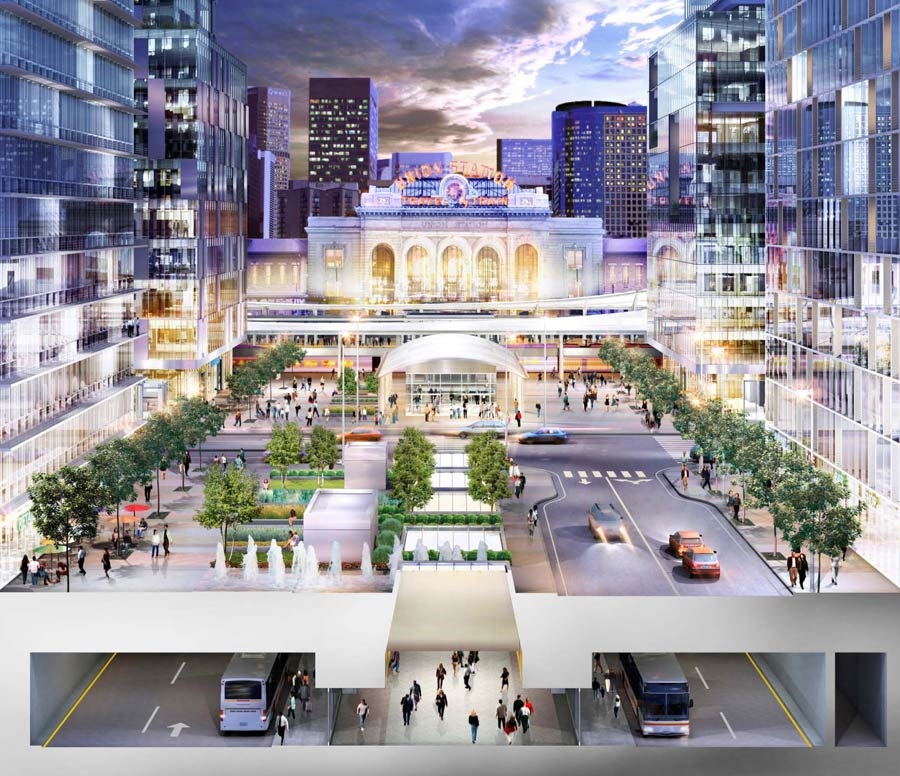 Credit: Denver Union Station Project Authority
Credit: Denver Union Station Project Authority
Denver’s forward thinking and significant commitment to public transit is shaping the redevelopment of Union Station, which promises to be one of the busiest, most dynamic urban centers in the world. The project will feature the Regional Transportation District’s (RTD’s) FasTracks program, new terminals, mixed-use development, important civic spaces, and the renovation of the original terminal. Developed by Denver’s Continuum Partners via the Denver Union Station Project Authority and designed by Skidmore, Owings, & Merrill LLP, AECOM, and Hargreaves Associates, this regional center is being designed from the ground up as an earth-friendly effort, from its skylit concourses and green roofs to its connection to the region’s sustainability goals. It combines housing, transportation, and environmental policies as set forth by the Colorado Tomorrow Alliance, which is working with Denver’s metropolitan planning organization, the Denver Regional Council of Governments, and with DOT, HUD, and EPA.
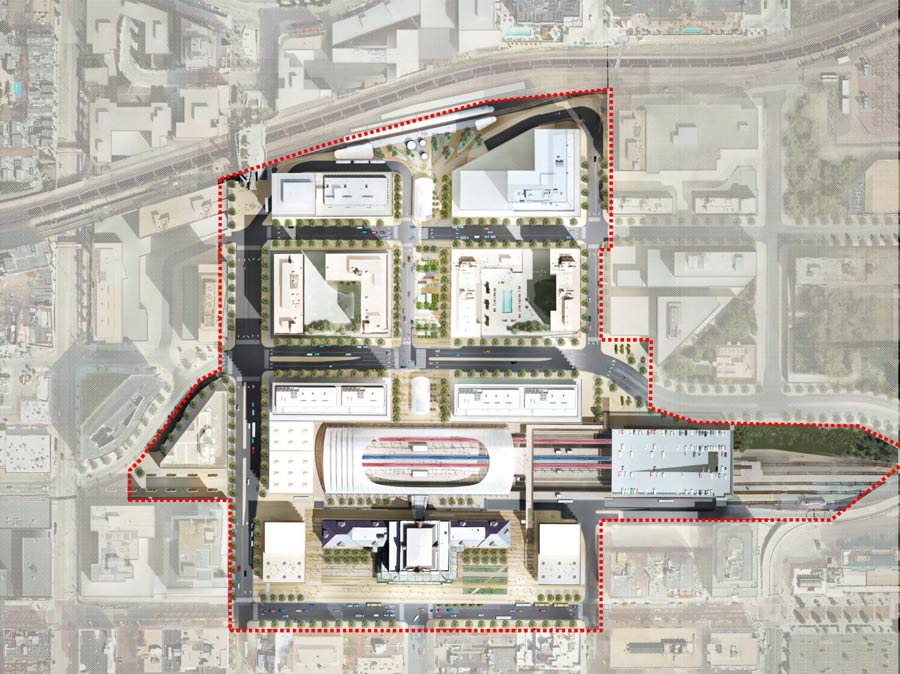
The terminal is complemented by the construction of two critical light rail lines, the East and West Corridors. The 22.8-mile East Corridor runs from downtown to the Denver International Airport (DIA), which just announced a major facility and bridge designed by Spain’s Santiago Calatrava. The 12.1-mile West Corridor is under construction now and goes from Union Station through Denver’s Federal Center and terminates in the Jefferson County Government Center in Golden, home of the original Coors brewery.
Union Station will serve 12 distinct modes of transportation, from bicycles and pedicabs to commuter rail and heavy rail. It will be anchored by a new Commuter Rail Train Hall designed to handle up to 10,000 travelers per hour converging from RTD’s new rail lines on eight tracks including the Amtrak and Ski Train services. Located immediately west of the original Union Station building, the Train Hall will greet visitors and travelers with a variety of open spaces carefully organized to encourage easy access while presenting a very active public realm filled with plazas, street cafes, and a band shell and seating as well as seasonal activities ranging from ice skating to bocce ball.
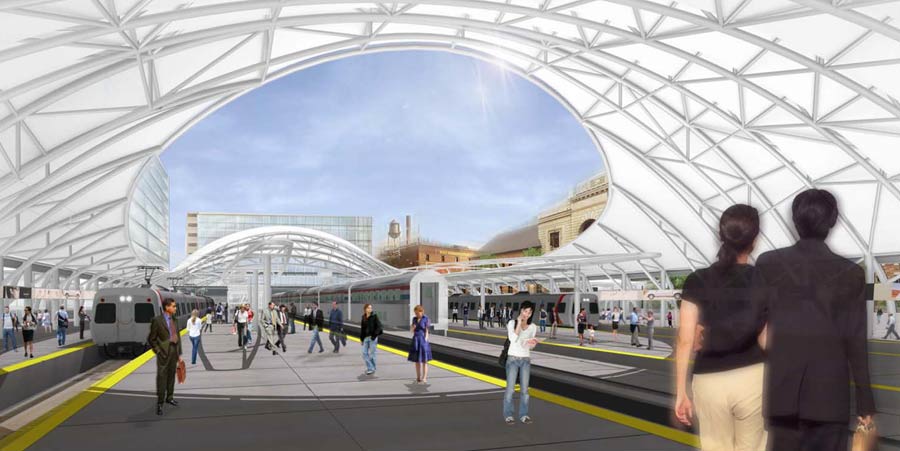
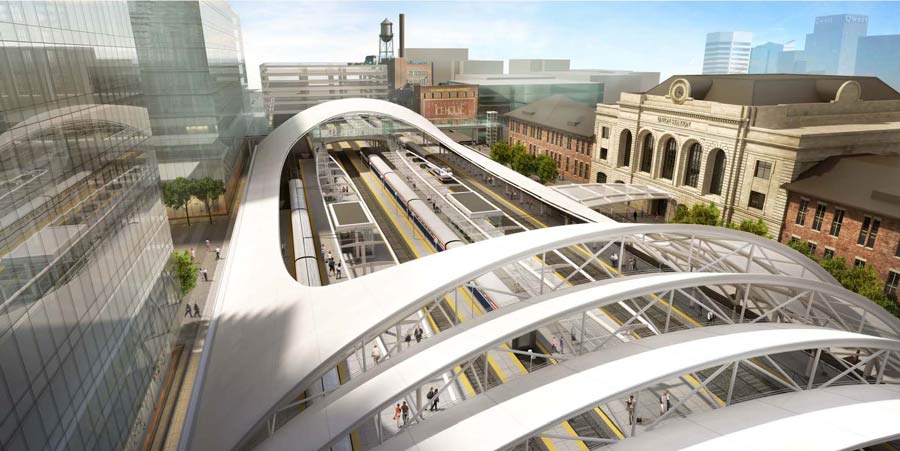
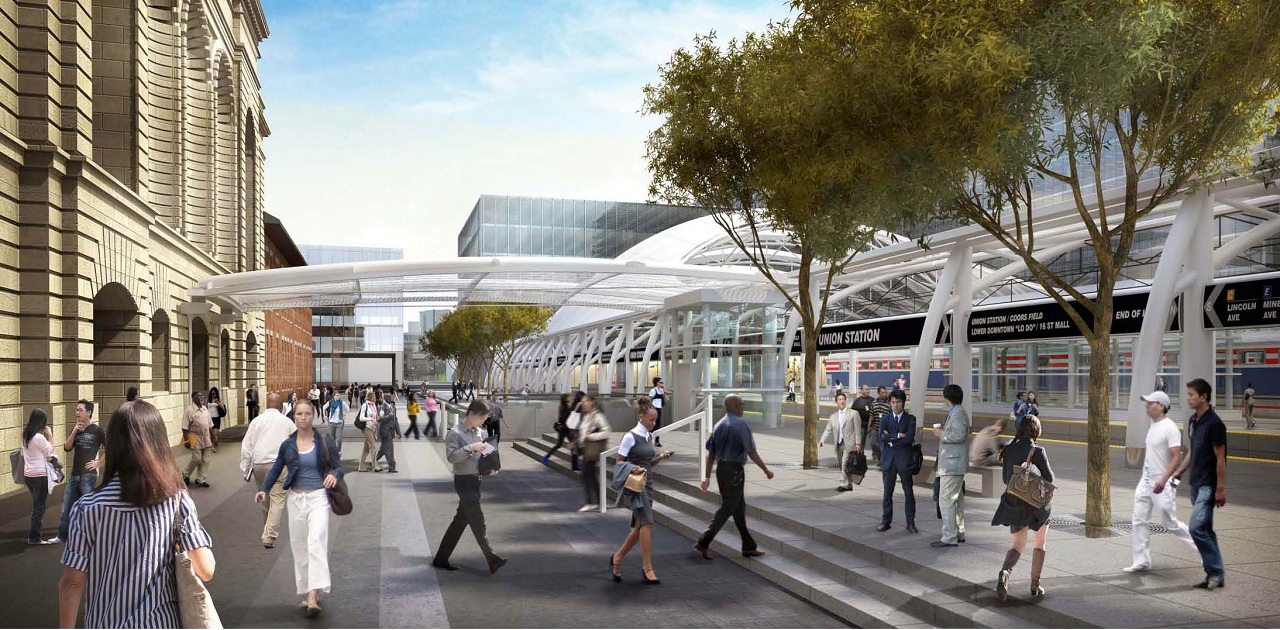
Union Station's role as a cultural expression of Denver’s urban vibrancy has not been overlooked by the design team, which included public art and unusual promenades that connect Union Station to Coors Field, home of the Colorado Rockies, as well as the Pepsi Center, the venue for the Colorado Avalanche, Denver Nuggets, and the nation's favorite music and entertainment stars. A transit connection to the 16th Street Mall and the Denver Performing Arts Complex is also planned.
Enhancing Denver’s outdoor recreational facilities, Union Station is adjacent to Riverfront Park and will include park-like plazas that connect to the South Platte River Greenway and nearby Confluence Park. The variety in the functions of these important outdoor spaces will also ensure the success of the neighborhood surrounding Union Station, including a major new retail center along Wewetta Street and a funky shopping district along Chestnut Street serving the popular LoDo loft residences. All of the plazas will include what the Project for Public Spaces terms “activated edges,” with shopping and cafés to draw the public presence necessary to keep the open spaces safe and pleasant.
Union Station’s architectural significance will be upheld from the views from 17th Street from both east and west, particularly with those from the 17th Street Gardens and Promenade, which connects the Train Hall to the skylit Regional Bus facility under the Promenade and the Light Rail Transit's raised platforms and station.
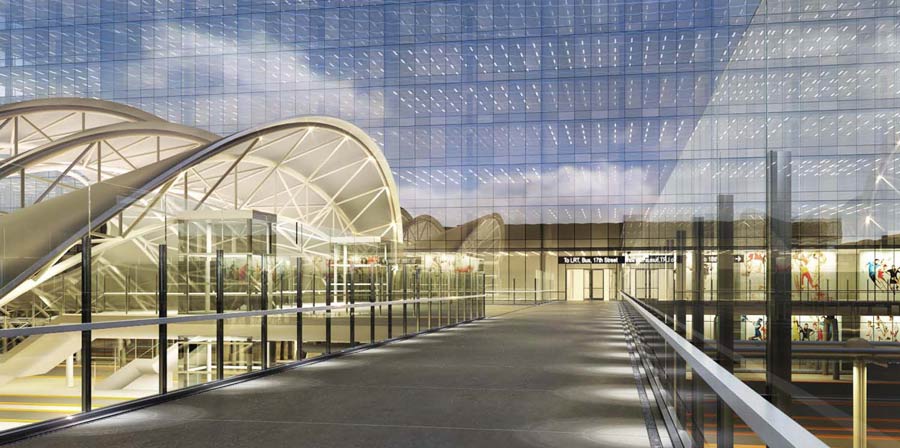
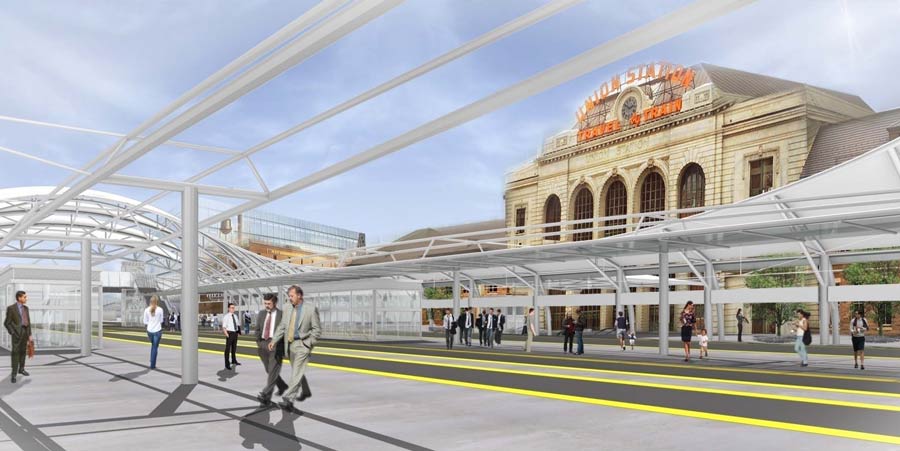
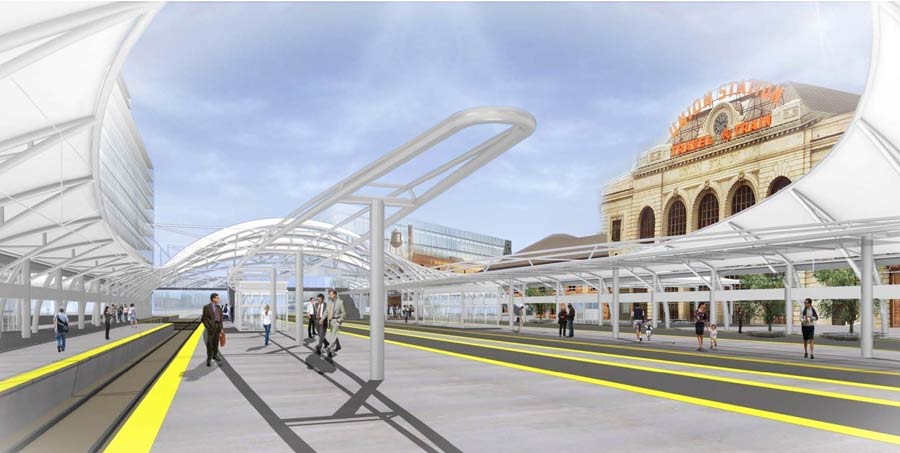
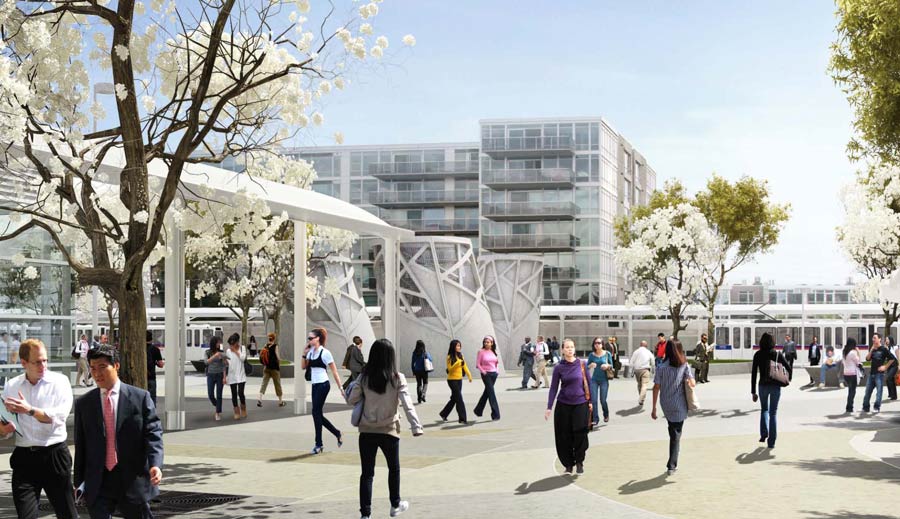
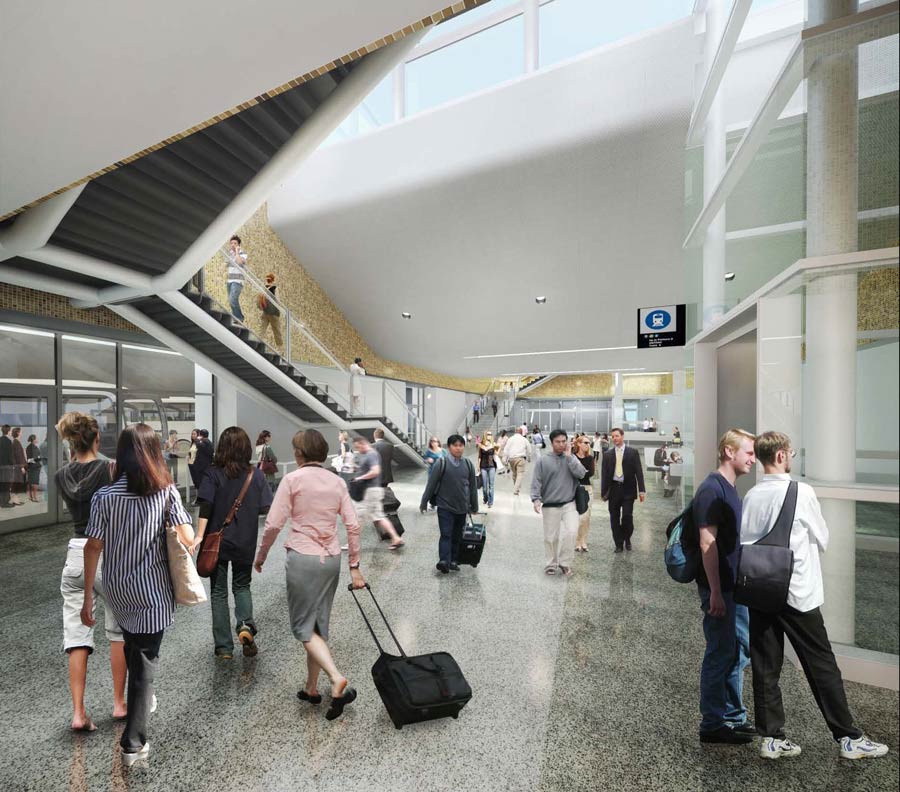

Morey Bean, AIA, LEED AP
Colorado's 1999 Architect of the Year and Vice Chair of the Boulder Chapter of the Urban Land Institute, Morey’s experience includes the successful development of the Colorado Architecture Partnership, an architecture firm dedicated to sustainability and green building. Morey was appointed by the Chief Architect of the GSA to the National Register of Peer Professionals. He serves as a ULI Service Advisory Panelist and was a charter member of the Colorado Chapter of the USGBC and past president of the Colorado South Chapter of the AIA. He is a construction litigation services expert witness, land development analyst and sustainability strategies consultant.
The author was honored by the Colorado Component of the American Institute of Architects as their Architect of the Year in 1999 and is on the Roster of Neutrals for the American Arbitration Association (AAA), providing dispute settlement for the design and construction industry.
Website: www.cyberarchitects.com
